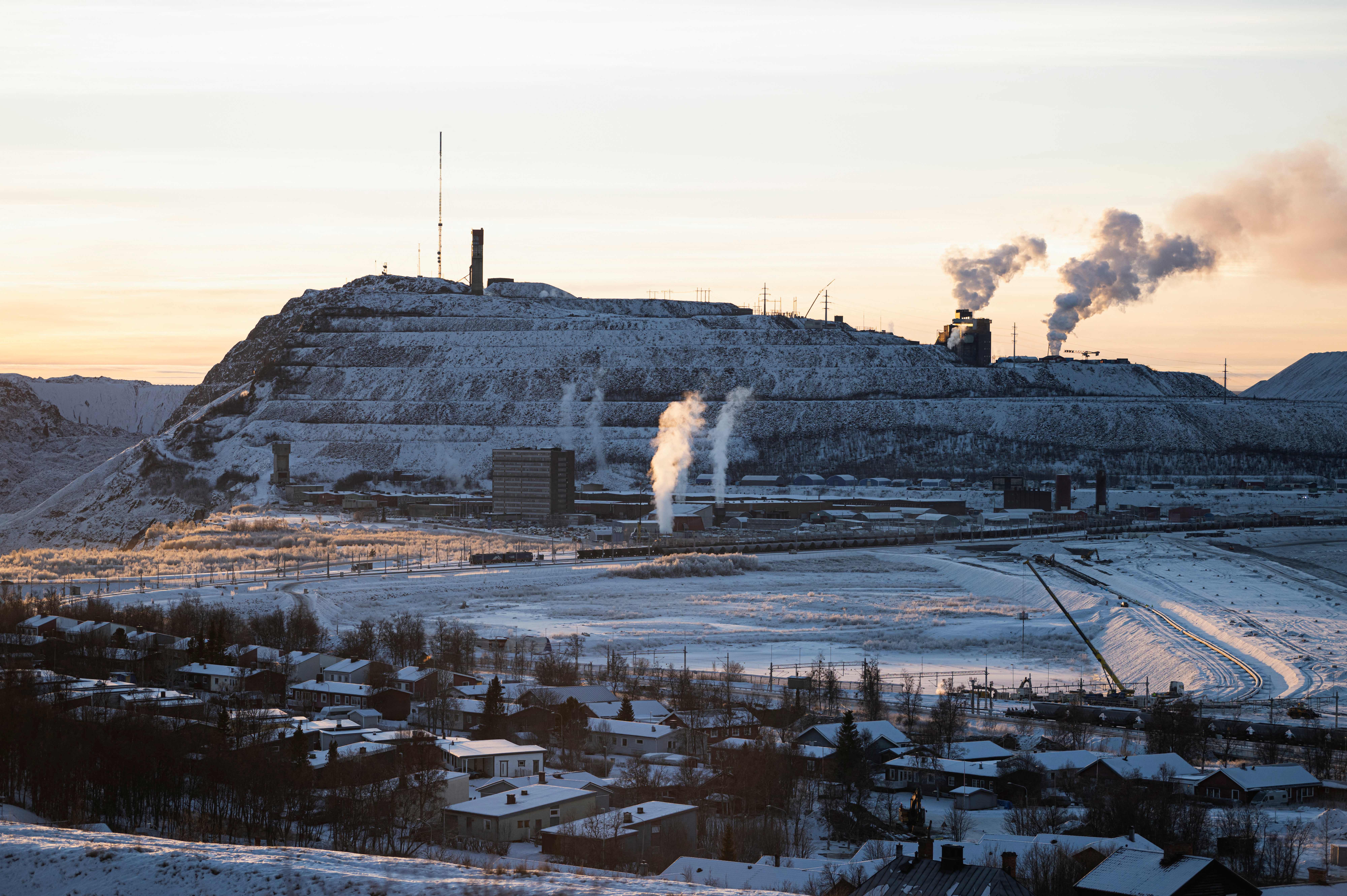Netflix’s The Abyss: The true story of the Swedish town that’s sinking into a crater
While security manager Frigga is a fictional character, the sinking town of Kiruna in Sweden is very real

Your support helps us to tell the story
From reproductive rights to climate change to Big Tech, The Independent is on the ground when the story is developing. Whether it's investigating the financials of Elon Musk's pro-Trump PAC or producing our latest documentary, 'The A Word', which shines a light on the American women fighting for reproductive rights, we know how important it is to parse out the facts from the messaging.
At such a critical moment in US history, we need reporters on the ground. Your donation allows us to keep sending journalists to speak to both sides of the story.
The Independent is trusted by Americans across the entire political spectrum. And unlike many other quality news outlets, we choose not to lock Americans out of our reporting and analysis with paywalls. We believe quality journalism should be available to everyone, paid for by those who can afford it.
Your support makes all the difference.Last week (19-25 February), the most-watched movie on Netflix was a Swedish natural disaster thriller that went largely unheralded when it was released last year.
The Abyss, from director Richard Holm, tells the story of Frigga (Tuva Novotny), a security manager at the Kiirunavaara mine in Sweden’s most northernmost city. Faced with the tricky balancing act of her risky job and her complicated family life, she soon finds herself fighting for her life and the lives of her loved ones when her city starts collapsing into the mine.
The film drew a staggering 22.3 million viewers on Netflix last week alone, and many of those watching were left asking the same question: Is the city of Kiruna really sinking?
While Frigga is just a character and The Abyss is a work of fiction, the reality is that Kiruna and the mine located beneath it are both very real.
Kiruna, a city of about 22,900 people located more than 120 miles above the Arctic Circle, is home to the world’s largest underground iron ore mine — and the mining operations that have been going on there since the late 1800s have made the ground weak and unstable.
When director Holm sat down to write the script with his son, Robin Sherlock Holm, and Nicola Sinclair, the trio had been inspired by real-life events. As the film explains at the start, in May 2020 there was a massive earthquake that occurred in Kiruna due to excavation. Although 13 miners were working at the time of the earthquake, thankfully no deaths or injuries occurred.

The threat of the town collapsing into a massive crater is also very real. That’s why two decades ago the people of Kiruna made a big decision. The city decided to move itself, brick by painstaking brick, 3km to the east.
In 2004, state-run mining company Luossavaara-Kiirunavaara Aktiebolag (LKAB), which owns the mine, realised that their planned expansion of the mining tunnels would result in the collapse of the city. Determined to save both the mine and the city, they took on the $2bn task.
“It was never an option to close the mine,” said Niklas Siren, vice chairman of the executive committee of Kiruna. “The mine has always existed in symbiosis with Kiruna.”

Watch Apple TV+ free for 7 days
New subscribers only. £8.99/mo. after free trial. Plan auto-renews until cancelled

Watch Apple TV+ free for 7 days
New subscribers only. £8.99/mo. after free trial. Plan auto-renews until cancelled
Some buildings were able to be placed on flatbed trucks and moved intact, but the majority of the homes in Kiruna are in the process of being demolished and rebuilt.
LKAB has been purchasing people’s homes at sale price plus 25 per cent, giving them the means to buy a home in the new city. Alternatively, they can skip the transaction and accept a new, free home in the new location.
There are three buildings, however, that will not be demolished – instead, they will be carefully dismantled and rebuilt in a new location. This includes Kiruna Church, which was once voted the most beautiful building in Sweden.
This has not been an easy process, but architect Mark Szulgit said it’s worth the effort: “The biggest challenge that’s facing us is not the design of a new city which is sustainable, attractive and modern,” he said.
“The biggest challenge is to move the minds of the people and to move the culture. Every decision we take as architects has a future life attached to it for a hundred years forward.”
It is estimated that the relocation project won’t be completed until 2035. It’s a long, slow process – but the plan is to avoid a terrifying disaster on the scale of the one millions of Netflix viewers have now seen play out in The Abyss.
Join our commenting forum
Join thought-provoking conversations, follow other Independent readers and see their replies
Comments